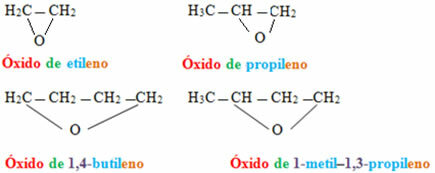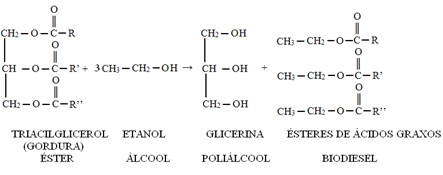This text proposes tips for calculating the partial volume of a gas. Remember that the partial volume of a gas is the space that a gas occupies inside a container, when the full pressure of the gas mixture is being exerted on it.
O calculating the partial volume of a gas can take into account several variables, such as:
The amount of matter in the gas;
The amount of matter in the gas mixture;
The total pressure of the gas mixture;
The total volume of the gas mixture;
The fraction in quantity of matter in the gas;
The temperature of the gas mixture in Kelvin.
Follow now the tips for calculating the partial volume of a gas, in which we use all the variables proposed above:
→ 1st Tip: Formulas
To calculate the total volume (Vt) of the gas mixture, use:
Vt = VTHE + VB + VÇ + ...
To calculate the partial volume of a gas from the fraction in quantity of matter of gas (XTHE ) and the total volume (Vt), use:
VTHE = XTHE
Vt
To calculate the fraction in quantity of matter in the gas (XTHE), we use the relationship between the amount of matter in the gas (nTHE) and the mixture (nt):
XTHE = noTHE
nt
To calculate the partial volume of a gas from the amounts of matter in the gas and the mixture (nt), use:
VTHE= noTHE
Vt not
To calculate the amount of matter in a gas, just divide the mass by its molar mass (calculated using the substance's molecular formula):
noTHE = mTHE
MTHE
To calculate the amount of total matter (nt) of the mixture, we must add the amounts of matter of all gases:
not = nTHE + nB + nÇ + ...
Formula relating to partial pressure (PTHE ) and the partial volume (VTHE ) of a gas:
PTHE= VTHE
Pt Vt
→ 2nd tip
When the exercise requires partial volume calculation, but provides partial pressures of the mixture gases:
A key item that exercise will provide, in addition to partial pressures, is system volume;
The partial pressures provided must be added to find the total system pressure (Pt):
Pt =PTHE + PB + PÇ
To determine the partial volume of each gas in the mixture, just use the following expression:
PTHE= VTHE
Pt Vt
Example:A mixture is formed by the gases CO, O2 and SO2, in a container whose volume is 5L. Each gas contained in the container has the following partial pressure, respectively: 0.50 atm, 0.20 atm and 0.30 atm. Calculate the partial volumes for each of the components of this gas mixture.
1st Step: Add the partial pressures (0.50 atm, 0.20 atm and 0.30 atm) of the three gases supplied (CO, O2 and SO2):
Pt =PCO + PO2 + PSO2
Pt = 0,5 + 0,2 + 0,3
Pt = 1 atm
2nd Step: Calculate the partial volume of CO using the total volume (5L), its partial pressure (0.5 atm) and the total pressure (1 atm) in the expression:
PCO = VCO
Pt Vt
0,5 = VCO
15
1.VCO = 0,5.5
VCO = 2.5 L
3rd Step: Calculate the partial volume of the O2 using the total volume (5L), its partial pressure (0.2 atm) and the total pressure (1 atm) in the expression:
PO2= VO2
Pt Vt
0,2 = VO2
1 5
1.VO2 = 0,2.5
VO2 = 1 L
Step 4: Calculate the partial volume of the OS2 using the total volume (5L), its partial pressure (0.2 atm) and the total pressure (1 atm) in the expression:
PSO2= VSO2
Pt Vt
0,3 = VSO2
1 5
1.VSO2 = 0,3.5
VSO2 = 1.5 L
→ 3rd Tip
Calculation of the partial volume of a gas using molar percentages:
In this type of situation, exercise provides the total pressure, molar percentages of gases, and the total volume of the system;
-
The molar percentages given are the fractions in quantity of matter of each gas. To use them in calculations, just divide by 100;
Do not stop now... There's more after the advertising ;)
The formula indicated to determine the partial volume of gas is as follows:
VTHE = XTHE
Vt
Example: Air is a mixture of gases. More than 78% of this mixture is nitrogen. Oxygen represents about 21%. Argon, 0.9%, and carbon dioxide, 0.03%. The rest is made up of other gases. The volume occupied by oxygen in this mixture, in a 10 L environment, is equal to?
1st Step: transform the percentage of oxygen gas (O2) in molar fraction dividing the value provided by 100:
XO2 = 21
100
XO2 = 0,21
2nd Step: use the total volume (33.6L) and the fraction in amount of matter of the O2 (0.21) in the expression:
VO2 = XO2
Vt
VO2 = 0,21
10
VO2 = 10. 0,21
VO2 = 2.1 L
→ 4th Tip
When the exercise informs volumes, temperatures and pressures of each gas, then it says that they were mixed and start to exert a new pressure.
In this case, we have the volume, pressure and temperature of each gas individually;
The exercise will inform the pressure that the mixture of these gases exerts at a new temperature;
Calculate the number of moles of each gas (nTHE) through its pressure, volume and temperature (in Kelvin) in the expression of clapeyron:
PTHE.VTHE = nTHE.R.T
After calculating the number of moles of each gas, it is necessary to add them together to determine the total mole number (nt):
not = nTHE + nB + ...
With the number of moles, we must determine the total volume through the total pressure of the container and the temperature, also in the Clapeyron equation
Pt.Vt = nt.R.T
At the end we will have enough data to calculate the partial volume of each gas (VTHE) through its mol number (nTHE), total mole number and total volume in the expression below:
VTHE = noTHE
Vt not
Example:A volume of 8.2 L of hydrogen gas that is at 227°C, exerting a pressure of 5 atm, and a volume of 16.4L of nitrogen gas, at 27°C and 6 atm, are transferred to another container maintained at a constant temperature of -73°C. Knowing that the mixture now exerts a pressure of 2 atm, calculate the volume of the container and the partial volumes of each gas. Given: R=0.082 atm. mole-1.K-1
1st Step: calculate the number of moles of each gas using volume, temperature (in Kelvin; just add the given value to 273) and pressure:
For hydrogen gas (H2)
PH2.VH2 = nH2RT
5.8.2 = nH2.0,082.500
41 = nH2.41
noH2 = 41
41
noH2 = 1 mol
For Nitrogen gas (N2)
PN2.VN2 = nN2RT
6.16.4 = nN2.0,082.300
98.4 = nN2.24,6
noN2 = 98,4
24,6
noN2 = 4 mol
2nd Step: Determine the total mole number using the mole numbers of the gases found in step 1:
not = nH2 + nN2
not = 1 + 4
not = 5 mol
3rd Step: Calculate the volume of the container where the mixing was carried out. For this, we will use the sum of the mole numbers of the gases found in steps 1 and 2, total pressure supplied and the temperature (-73 OC, which, in Kelvin, is 200) in the expression below:
PVt = nt.R.T
2.Vt = 5.0,082.200
2.Vt = 82
Vt = 82
2
Vt = 41 L
Step 4: Calculate the partial volume of each gas using the total volume, the number of moles of each gas and the number of total moles:
For Hydrogen gas:
VH2= noH2
Vt not
VH2 = 1
41.5
5. VH2 = 41.1
5.VH2 = 41
VH2 = 41
5
VH2 = 8.2 L
For Nitrogen gas:
VN2= noN2
Vt not
VN2= 4
41 5
5. VN2 = 41.4
5.VN2 = 164
VN 2 = 164
5
VN2 = 32.8 L
By Me. Diogo Lopes Dias
What are gases, what are the properties of gases, molecular compounds, compressibility, fixed volume, kinetic energy mean, absolute temperature of a gas, ideal gas, Real gases, perfect gas, gas state variables, volume of a gas, seasons



